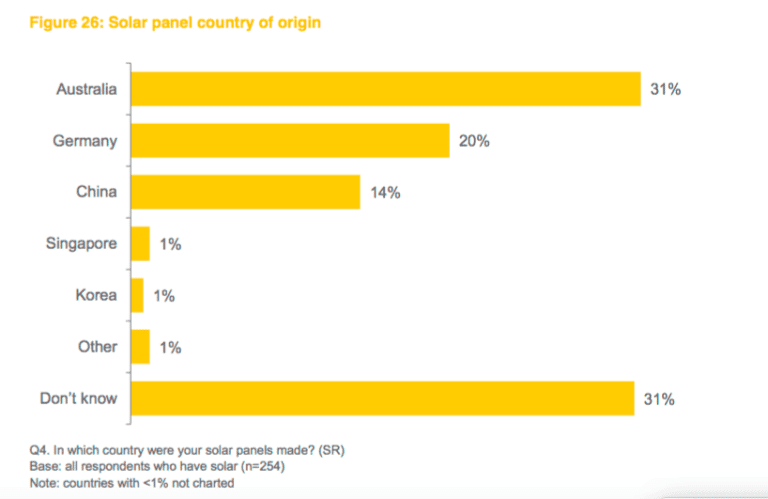More than 1.5 million Australian solar households have already installed rooftop solar PV panels, and within a decade or two another five million will likely do the same. But what drives Australians to install solar, and how do they make their choice of panels and other equipment?
A survey conducted by Colmar Brunton for the Australian government’s AntiDumping Commission, which recently investigated allegations of “dumping” by Chinese solar module manufacturers in the Australia market, has produced some interesting and surprising data.
The first relates to the expected payback time of rooftop solar panels. Nearly one half of households – both those with solar panels and those considering it – expect a pay-back within 5 years, and about 19 per cent of those with solar expected a payback within 3 years.

A small minority (4 per cent) thought they would get a payback within 2 years, although more than twice as many thought it would take more than 10 years to get the money back on their rooftop solar investment.
Those findings are probably fairly consistent with most people’s experience, even if the results for individual households are variable according to how much solar people install, where they put it, where they live, how they use the output and what tariffs they are facing.
Another finding, however, is quite startling: it seems that many Australians do not know where their solar panels come from and up to one third have the mistaken belief that their solar panels were made in Australia.

This graph above shows that 31 per cent of those surveyed through that they had bought Australian solar modules. Given that the Australian market has only one solar module manufacturer (Tindo Solar in Adelaide), which has a fraction of a one per cent market share, they are clearly mistaken.
Another 31 per cent did not know where their panels came from. Only 14 per cent thought that their panels came from China, where in fact market data shows that Chinese module manufacturers account for more than 80 per cent of the market.
“It is clear that there is some confusion,” the report says. “It could be that households assume that their panels are Australian assembled when they are not, or perhaps that it is not made clear during the sales process.
“Regardless, given the importance of country of origin and brand in the purchase decision it is clear there is a lack of awareness among consumers on the true origin of their panels.”
As the comments show, it is ironic because many buyers place high importance on the origin of the panels, and on quality, although when it comes down to the final decision, price plays the most important factor.
When asked to consider what issues were of consideration when choosing PV panels, the majority of households with solar (56%) state the financial cost.
“Despite this being the stand out issue, a number of other factors impact on the decision. Given that a fifth (20%) had to consider or overcome having limited knowledge on the topic it is likely that the role of salespersons is influential in the final decision.”
And given the confusion over the country of origin, it suggests that many sales people have not been entirely frank.










